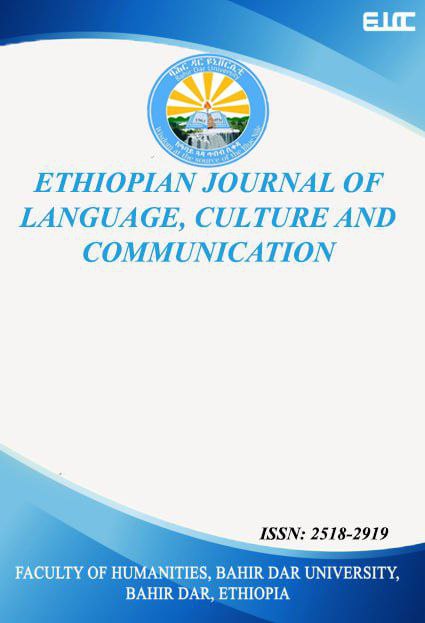An analysis of the perception of purification from impurity through the GIs ritual in the Basoliben community
Abstract
This study investigates how the Basoliben community perceives the ritual of “Gis” as a means of purfyng impurity. The main reason for this study is that there is a gap in studies focusing on the concepts of impurity and purification in Ethiopia, both in cultural studies and other academic disciplines. In the study, from the twenty-five kebeles found in Basoliben woreda, five kebeles were selected by purposive and snowball sampling techniques. The primary data were collected through observation, interviews, and focused group discussions in natural setting. The gathered data were analyzed using a descriptive and content analysis method, framed by structural-functionalism and purification-defilment or impurity theory approaches. The finding of the study indicat that, for the Basoliben community, one of the mechanisms used to purify what is considered defilement is the ‘Gis’ ritual which serves as an institutionalized way of preserving social values. The study reveals that the Gis ritual is performed by sprinkling blood and its goal is to protect the health of people and animals, as well as to cleanse diseases related to epidemics and curses. Furthermore, the Gis ritual is not performed by individually, but through criteria that can bring people together. It is seen as a method of keeping purity in the community by avoiding defile behaviors that could jeopardize their social cohesiveness. Overall, the findings show that the community's observance of the Gis ritual serves as a means of maintaining cleanliness by avoiding undesirable acts that may harm unity, cause loss of production, or affect health. Likewise, adhering to the rules applied the norms of Gis ritual is a symbol of purity, and the diseases that results from not observing the norms and values is considered defilement.
Copyright (c) 2025 Author(s)

This work is licensed under a Creative Commons Attribution 4.0 International License.
Authors who publish with this journal agree to the following terms:
- Authors retain copyright and grant the journal right of first publication with the work simultaneously licensed under a Creative Commons Attribution License that allows others to share the work with an acknowledgement of the work's authorship and initial publication in this journal.
- Authors are able to enter into separate, additional contractual arrangements for the non-exclusive distribution of the journal's published version of the work (e.g., post it to an institutional repository or publish it in a book), with an acknowledgement of its initial publication in this journal.
- Authors are permitted and encouraged to post their work online (e.g., in institutional repositories or on their website) prior to and during the submission process, as it can lead to productive exchanges, as well as earlier and greater citation of published work (See The Effect of Open Access).


